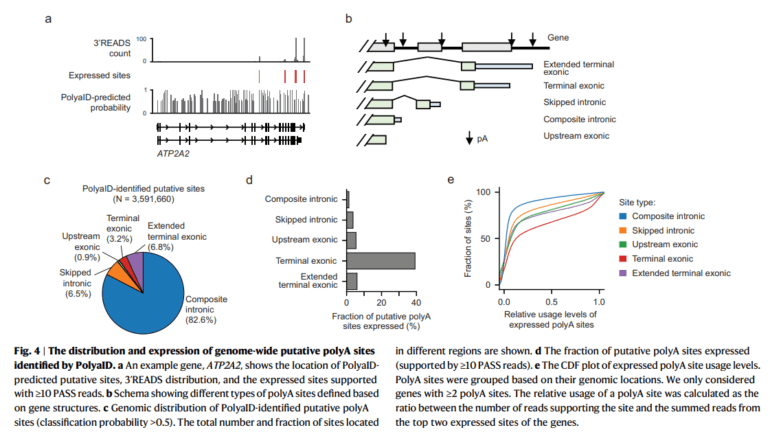TL;DR:
- Northwestern University has developed deep learning models to enhance our comprehension of cleavage and polyadenylation (polyA) in genetics.
- These models identify potential polyA sites across the entire human genome and calculate their strength, providing a comprehensive view of the process.
- The models quantify the significance of motifs and interactions involved in polyA site formation, revealing insights into genetic regulation.
- Researchers have employed logistic regression to analyze genomic parameters influencing polyA site expression in various gene regions.
- Thousands of genetic variants related to polyadenylation activity, illnesses, and traits have been discovered using these models.
Main AI News:
In the realm of genetics, precision is paramount. A groundbreaking development from Northwestern University is set to revolutionize our understanding of an essential genetic process known as cleavage and polyadenylation (polyA). This process, responsible for mRNA maturation, involves the precise cleavage of a newly formed transcript and the addition of a tail composed of adenine nucleotides. However, any misalignment with the surrounding gene structure can lead to premature transcription termination and the generation of aberrant proteins.
Enter Northwestern University, where researchers have harnessed the power of deep learning models to illuminate this intricate genetic dance across the entire human genome. These sophisticated models excel in identifying potential polyA sites with unparalleled precision, shedding light on their strength and usage within the genomic landscape.
The Power of Precision
Traditional methods for predicting polyA sites have their limitations. Some models can only calculate the probability of a sequence being a polyA site but fall short when it comes to pinpointing the exact location of the cleavage site. Others are confined to known polyA sites, rendering them less versatile in exploring the vast genomic tapestry. Northwestern’s groundbreaking deep learning model transcends these constraints. It adeptly pinpoints potential polyA sites throughout the entire human genome, providing a comprehensive understanding of this vital process.
Unlocking Genetic Significance
The strength of these models lies in their ability to quantify the significance of specific motifs and their intricate interplay during the formation of polyA sites. Crucial elements such as the polyadenylation signal (PAS) and other distinctive cis-regulatory motifs are identified, accounting for the complex choreography involving various RNA-binding proteins. This breakthrough allows researchers to dissect the interactions between these components in greater detail, unraveling the secrets of polyA site formation.
A Glimpse into the Future
To showcase the capabilities of these groundbreaking models, scientists employed logistic regression to analyze genomic parameters influencing polyA site expression across different gene regions. Their findings reveal that the surrounding splicing landscape exerts a significant influence on intronic site expression. In contrast, the utilization of alternative polyA sites in terminal exons is dictated by their relative positions and distances from downstream genes. This invaluable insight empowers the models to identify potential sites and offer profound insights into their regulation based on their genomic context.
Pioneering Medical Discoveries
Perhaps most significantly, these models have unearthed thousands of genetic variants linked to illnesses and traits that impact polyadenylation activity. This groundbreaking achievement underscores the practical utility of these models in deciphering the molecular mechanisms underpinning a myriad of medical conditions.
Conclusion:
Northwestern University’s pioneering deep learning breakthrough has the potential to reshape the genomic landscape. The precision and versatility of these models open new horizons for precision medicine, offering profound insights into genetic regulation and providing a valuable resource for researchers and healthcare professionals in understanding and addressing a wide range of medical conditions. This breakthrough represents a significant step forward in the genomics market, fueling innovation and advancements in the field.

